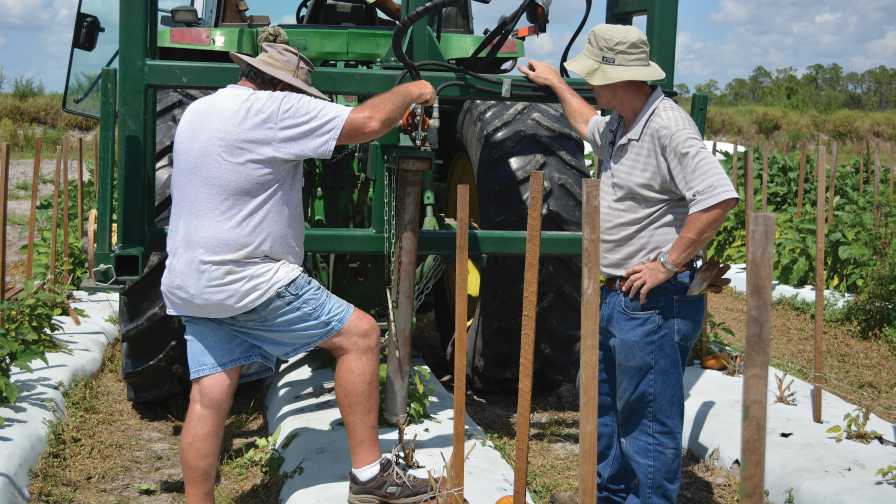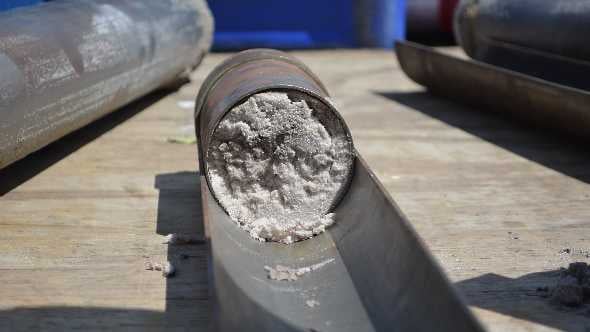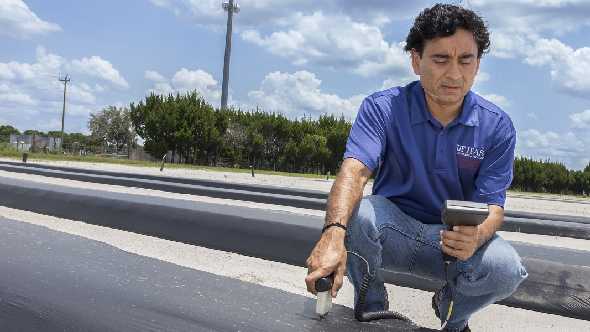Probing New Ways to Keep Bugs out of Vegetable Beds

Plasticulture crop nuisances like nematodes are escaping traditional fumigation measures by moving deeper in the soil.
Photo by Frank Giles
Since the phase-out of methyl bromide, growers and researchers have been on a quest to utilize available tools to manage nematodes, soilborne diseases, and weeds in plasticulture crops. That has not been without its challenges as alternative fumigants don’t move throughout the bed like methyl bromide.
Researchers have studied a number of approaches to improve distribution of fumigants throughout the bed with new application approaches or changes in bed structure. In addition, growers have zeroed in on combinations of chemical products that perform best against targeted pests.
Under the Bed
Joe Noling, a Professor of nematology with UF/IFAS, has been helping growers battle nematodes for years. After methyl bromide was phased out, Noling set out to help growers with enhanced scouting and control methods for the pest.
It has been learned that root-knot and sting nematodes can occur at depths of 3 to 4 feet in the soil, which is well below the bed and traffic hard pan. To scout for nematodes deeper than the traditional soil sample depth of 8 to 10 inches, Noling has developed a hydraulic probe that attaches to the rear of a tractor to take soil samples deeper than the traffic pan.
To manage those nematodes that are at greater depths, Noling has been researching delivering fumigant with a deep shank system developed by Mirusso Enterprises.

This probe presses past the traffic pan to collect deep samples.
Photo by Frank Giles
“It could potentially play a pretty significant role in improving nematode control and the performance of fumigants,” Noling says. “Nematodes could not have escaped this easily with methyl bromide because it raced deep into the soil past the traffic pan.”
In the Bed
Research also has focused on better distribution of fumigant products in the bed. Improved distribution is especially import to manage soilborne diseases in plasticulture crops. Fusarium-based root and vascular diseases can be particularly problematic.
Gary Vallad, an Associate Professor of plant pathology with UF/IFAS, has been trialing a secondary application of fumigant along the sides of beds. After beds are pulled, a Yetter coulter is used to apply chlorpicrin under the tuck of the plastic in the bed.
“We looked at root mass and pulled samples from the edge of the bed, and it made a huge difference how many roots were growing in that area of the bed,” Vallad says. “I think this accounted for a huge improvement in plant vigor where we did the side application test.”
Nathan Boyd, an Associate Professor of weed science with UF/IFAS, has been working with alternative shanks to better distribute fumigants in the bed. The shank has the traditional fumigant tube at 8 inches in depth, but it also has a more shallow tube to spread out the fumigant application in the bed.
“We are applying the same amount of fumigant, but we are spreading it out inside the bed,” Boyd says. “With this approach, growers can use their same fumigation rig and just change out their shanks, which is a minimal expense.”

Sanjay Shukla is developing a system that uses taller, more narrow beds to reduce water usage and cut fumigation rates in half. Photo courtesy of UF/IFAS
A New Bed
Sanjay Shukla, a Professor of agricultural and biological engineering with UF/IFAS, is studying how changing bed geometry could bring growers some additional benefits. The research surrounds changing traditional bed sizes of 6 to 8 inches high and about 3 feet across to beds that are 10 inches to 1 foot high and 1½ to 2 feet across. Shukla says the taller, more narrow rows produce the same yields as traditional beds.
The practice would allow growers to eliminate one drip line in beds and also use less square feet of plastic mulch to cover beds, resulting in considerable savings. The beds also retain more fertilizer, which reduces the potential for leaching into groundwater. And, it allows growers to cut fumigation rates by as much as 50%.
Shukla says the practice also would require about half the amount of water to irrigate when compared to traditional beds, which will grow in importance as the state’s water resources are pressured by growing population and development.
“We had a surprising discovery after Hurricane Irma when our compact beds survived the wind and flooding damage without losing plastic, while most of the conventional beds were damaged with plastic blown,” he says. “This could be a significant benefit with savings of more than $2,000 per acre if it can be replicated in commercial settings. Hurricane and flooding results were from small-scale experiments at the Southwest Florida Research and Education Center in Immokalee.”










